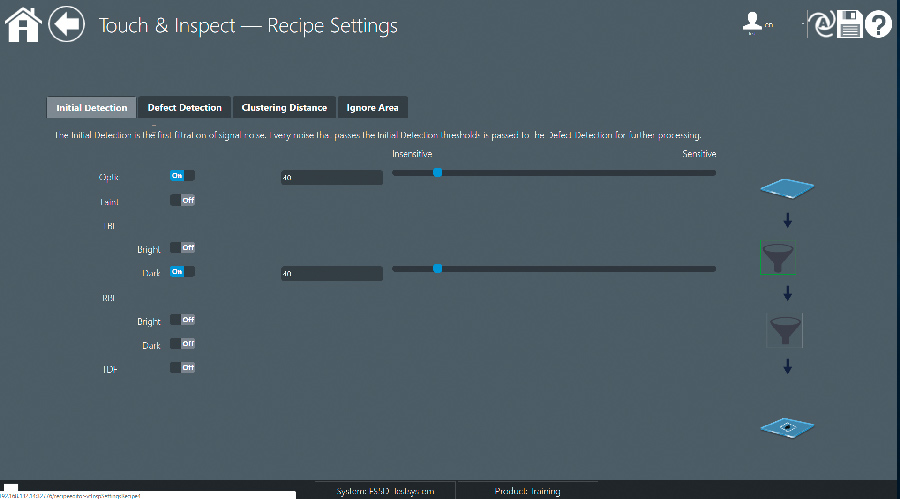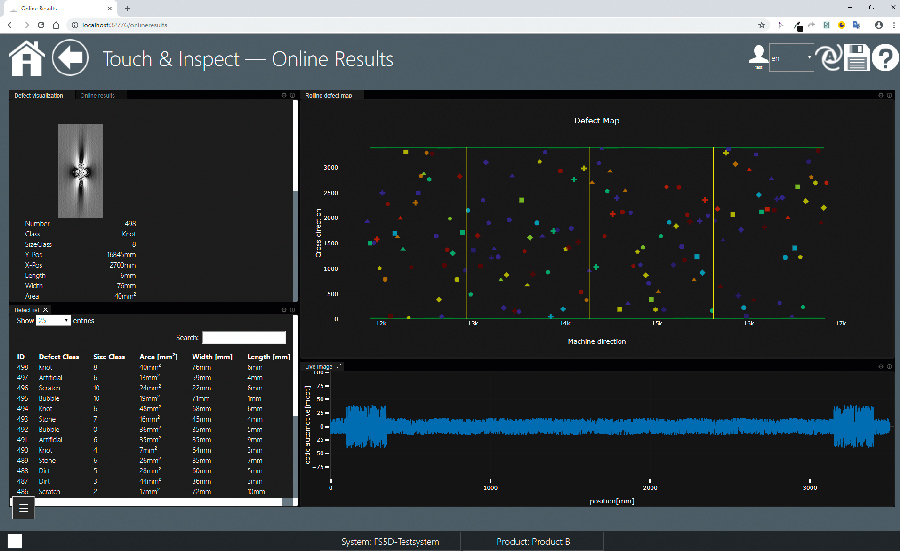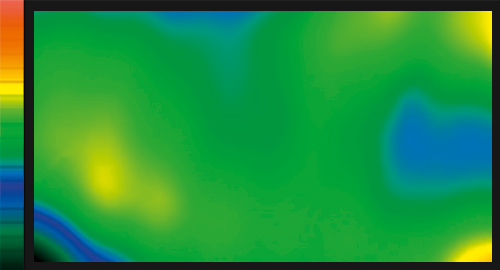An even more comprehensive quality inspection is now available in float glass production – including coating inspection, detection of low-contrast optical lines and improved core-size accuracy. The new inspection possibilities are the latest additions to a proven range, further boosting the effectiveness of fully automatic
optical quality assurance, while numerous system enhancements are also available for existing systems.
 |  |
Float glass is enormously important as a base material for countless glass products. An increasing number of potential applications in sectors, such as architecture, electronics, and the automotive industry has resulted in heightened demand on the one hand and continuously increasing quality requirements on the other. Therefore, even the first process step plays a decisive role in determining the attainable quality of the final product. The highest quality is only possible with a flawless raw material. This is where Isra Vision’s Floatscan-5D-system comes in, which enables direct quality control through early and complete inspection. Performing inspections at the earliest possible stage prevents the cost-intensive processing of products that are subsequently rejected. The all-in-one camera system combines five optical channels, thereby enabling a truly unique multidimensional inspection. It not only provides the exact position of defects on the top or bottom of the glass ribbon, but also localizes flaws inside it.

Optimum product quality, comprehensive detection of defects and increases in yield with the FS-5DXIN
The core-size accuracy now offers twice the precision: An optimized optical setup enables improved size classification and a more precise differentiation between quality levels, thereby optimizing both the yield and the deployment of resources. At the same time, the quality is improved further by enabling even more precise classifications. In the optical channel, for example, multi-filtering algorithms mean that various limits can be selected for each sub-
channel with the highest level of accuracy. Additionally, a pre-filter for reducing high frequency signal variations optimizes the detection of faint reams. Diagonal reams, such as V-shapes, are also detected more accurately thanks to an additional module checking fast changes of distortion in transport direction. Very narrow cords below the system resolution can be recognized through a unique combination of cross dark field and moiré analysis. At the same time, colour monitoring of the homogeneity of the online coating improves quality and uncovers potential for process optimization. The new version of the coating colour channel, with its unique robust design featuring a special RGB camera technology and durable white LED technology, inspects all colour variations across the entire surface. Coloured lines, dots, and zebra defects are among the flaws detected by this process. Furthermore, the improved access for maintenance is another practical feature. This allows the removal of reflection and transmission lighting independently of one another.


Staying ahead of the competition
The Floatscan system is a renowned industry standard all over the world and has established itself as a proven solution that customers have been relying on for many years. Therefore, many of the new features are also available for existing systems in the form of updates. The FS-5DXIN is one of the key products of this comprehensive glass inspection portfolio. Isra’s solutions optimize quality and processes throughout the entire float glass production: These include Powerplate 3D (P2-3D), the first and only solution for measuring flatness and waviness in a matter of seconds.


Three-dimensional optical surface detection
The Powerplate 3D (P2-3D) provides fast and complete inspection of flatness, waviness and reflection optics, now also captureing additional quality characteristics that are important for ensuring the highest customer satisfaction and optimal results: Within seconds, precise data on flatness, waviness and reflection optics is available, even for large glass surfaces. 3D shape defects are detected immediately, preventing faulty materials from being processed further. Manufacturers are able to maximize their yield of high-quality products and ensure they are suitable for use in the most challenging applications, such as in architecture, automobile production or in the manufacturing of mirrors.

3D measurement provides data for comprehensive process optimization
Isra Vision has developed Powerplate-3D (P2-3D) for these specific applications, the first and so far only solution for the automatic and fast full surface 3D measurement of flatness, waviness and reflection optics of glass panes. This non-contact process takes place immediately after the glass cutting and covers the entire surface. The system is based on the patented stereo deflectometry technology, allowing it to deliver objective and reproducible results for typical pane sizes in next to no time, regardless of the position or shape of the glass panes. The Powerplate 3D technology displays the measuring result as an elevation map and also as a vertical and horizontal curvature map. The curvature map is a highly sensitive tool that visualizes float lines and local rippling – especially near the ribbon edge – which can play a decisive role in further processing steps such as lamination.

Potential of float glass inspection for innovative industry sectors
Quality issues that occur after lamination, as well as during cutting and grinding can be caused by defects such as uneven panes; rippling can result in pronounced lens effects and transmission problems, which in turn cause safety problems. Transmission optics and reflection optics play a crucial role when it comes to aesthetics – another factor that is steadily gaining more importance in both buildings and cars. As such, the use of large-cut glass panes in architecture and construction offers great potential: Static and logistic factors are among the greatest challenges here and demand high requirements with regard to both safety and quality – and therefore also for the glass inspection. The same applies in the automotive sector, for instance in head-up displays: Windshields, on which information is projected, allow for no margin of error.


Isra Vision AG
www.isravision.com




